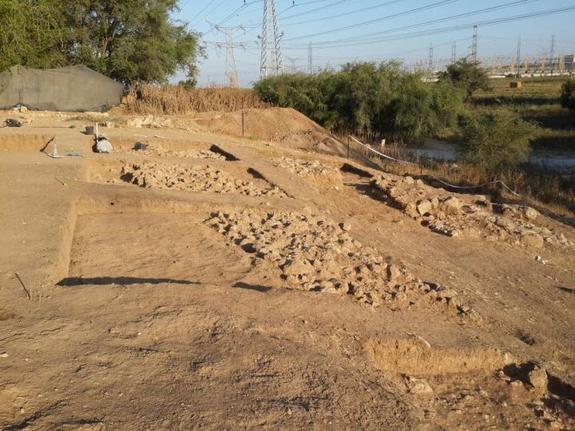
JERUSALEM — Archaeologists in Israel have announced the discovery of the gate to the biblical city of Gath, which was once the home of the notorious Philistine Goliath.
Bar-Ilan University issued notice of the find on Monday, which was led by The Ackerman Family Bar-Ilan University Expedition to Gath and professor Aren Maeir.
“Prof. Maeir, of the Martin (Szusz) Department of Land of Israel Studies and Archaeology, said that the city gate is among the largest ever found in Israel and is evidence of the status and influence of the city of Gath during this period,” the university noted.
The gate was discovered in the Judean Foothills, specifically in Tel Zafit National Park, located in Tell es-Safi. The site has been the subject of excavation since 1899, but only in recent decades have archaeologists realized the magnitude of the artifacts buried in the area.
In addition to the discovery of the gate, workers also uncovered a fortification wall, as well as other buildings, such as what is believed to be a temple and an iron production facility. Archaeologists state that Gath was the largest city in the area before it was destroyed by the King of Damascus in 830 BCE.
“We knew that Philistine Gath in the 10th to ninth century [B.C.] was a large city, perhaps the largest in the land at that time,” Maeir told Live Science. “These monumental fortifications stress how large and mighty this city was.”
Gath is known by Christians as being the home of Goliath, a Philistine nine-foot giant who challenged the people of Israel to a fight. While King Saul and the nation of Israel feared Goliath, and none dared to fight, the teenage boy David felt compelled to defeat the pagan giant, and killed him with only a slingshot and a stone.
“And there went out a champion out of the camp of the Philistines, named Goliath of Gath, whose height was six cubits and a span,” 1 Samuel 17 reads. “And the Philistine said, ‘I defy the armies of Israel this day. Give me a man, that we may fight together. When Saul and all Israel heard those words of the Philistine, they were dismayed, and greatly afraid.”
Gath is also cited in a number of other places in Scripture, being a place where David once fled to escape the wrath of Saul.
“And David arose, and he passed over with the six hundred men that were with him unto Achish, the son of Maoch, king of Gath,” 1 Samuel 27 outlines. “And it was told Saul that David was fled to Gath: and he sought no more again for him.”
Bar-Ilan University says that a number of other discoveries have been made at the site, including “Philistine Temples dating to the 11th through 9th century BCE, evidence of an earthquake in the 8th century BCE possibly connected to the earthquake mentioned in the Book of Amos I:1, the earliest decipherable Philistine inscription ever to be discovered, which contains two names similar to the name Goliath” and “remains relating to the earliest siege system in the world, constructed by Hazael, King of Aram Damascus around 830 BCE, along with extensive evidence of the subsequent capture and destruction of the city by Hazael, as mentioned in Second Kings 12:18.”
Become a Christian News Network Supporter...


